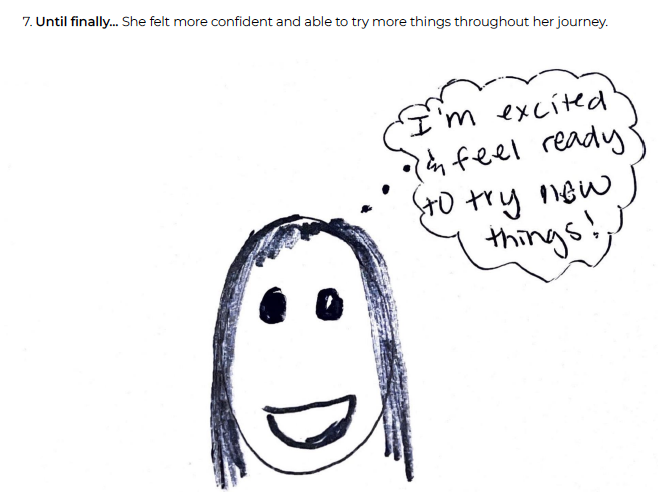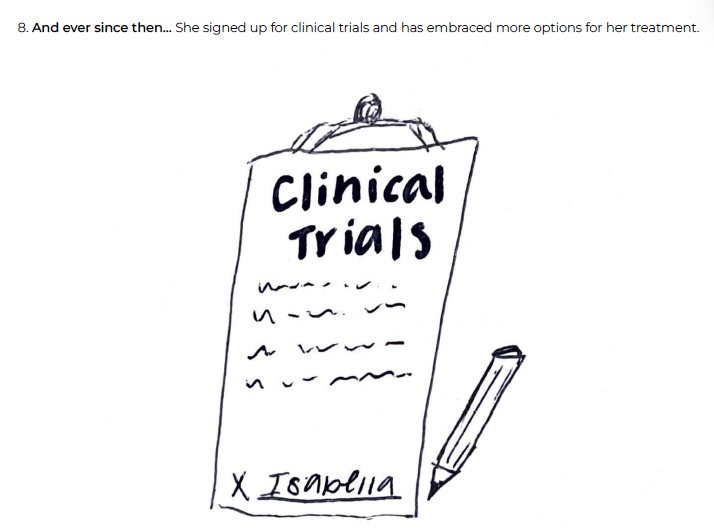Markey Cancer Center | Design Thinking
This project dives deeper into issues around the community and applies design thinking to real world problems. Partnering with Markey Cancer Center, we were able to meet with the PAG (Patient Advisory Group) team multiple times throughout the semester to hear about their experiences and where design could improve systems. The main goal of the project was to take these design opportunities, in order to increase participation rates in clinical studies.
“The Problem is not the Problem”
This quote was the main theme within the project. Often times, the problem we are trying to solve may not be the direct problem in front of you. The problem we need to solve for is often an underlying cause, that can be reveled through design.
The first task of the project was to search for analogous models. As we learned about unmet needs of the patients, I looked at other businesses that were fulfilling or unfulfilling these needs. Going to the two grocery stores, I hoped to gain insight on to how I was greeted, how I felt walking in, how I felt asking for help, and the experience overall. I wanted to focus on these stores because grocery shopping is something most people have to do. If a common task is so universal, I wanted to see what I could learn from the experience. User experience is very important to the success of a business. In this case for our project, user experience plays a huge role in someone’s life. By taking myself out of the project, and visiting analogous settings, I was able to gain some insight on how the same task could have a completely different outcome.
I found shopping at Trader Joes was a much more pleasant experience than shopping at Kroger. I felt as though Trader Joes was a user-centered business, whereas Kroger was solelycentered around business. While Kroger may wanted to do things more efficiently, Trader Joes was about the whole experience. The decorations, conversations with the staff, and overall joy I felt is what would make me want to come back.
The next phase of the project was interviewing CRAs and patients. In order to prepare for these interviews, my group and I wrote questions we needed answered in order to find any gaps or insights in terms of user experience.

Patient Interview Questions

CRAs Interview Questions
After interviewing, we noticed many opportunities for design. We took these findings and conducted a brainstorming session to come up with potential ideas for a final outcome. The image to the left describes the idea our team selected to move forward with, which was the idea of patients and CRAs to “speed date” in order to find a mentor/mentee.
With the selected “speed dating idea,” we continued to conduct iteration sessions where we expanded the idea or changed certain aspects. During this time, we continued to meet with the PAG (Patient Advisory Group) to get their feedback as well. Hearing their stories and experiences influenced our design outcomes.
From our feedback, the final solution was a weekend get away where patients and CRAs would meet in order to get a mentor/mentee. This weekend’s purpose was to get these users out of the hospital and to have a dedicated time to meet new people, participate in events, and to find a mentor/mentee who would be their support system through their cancer journey. Below is a rough draft storyboard of this program.








Taking a tour of the Markey Cancer Center allowed us to walk in the shoes of the patient. We took a walk around the facility and learned what a day in the life would look like for a patient. Through this tour and hearing the stories of those on the PAG team, we learned that user experience does not start with the physical environment, but rather the people who are within the facility. With our main goal of trying to improve clinical trial participation rates, this insight was the core factor in how we can achieve this goal.


The recommendations were then handed over to our partner, Markey Cancer Center and the PAG team in order for them to use as recommendations for their policies at the facility.



